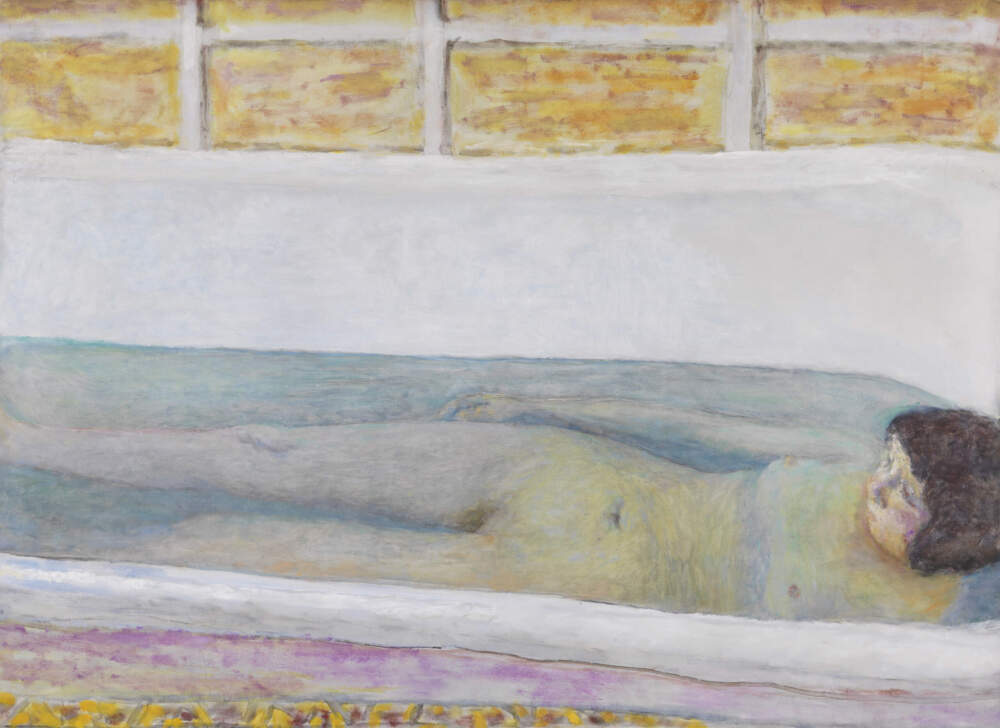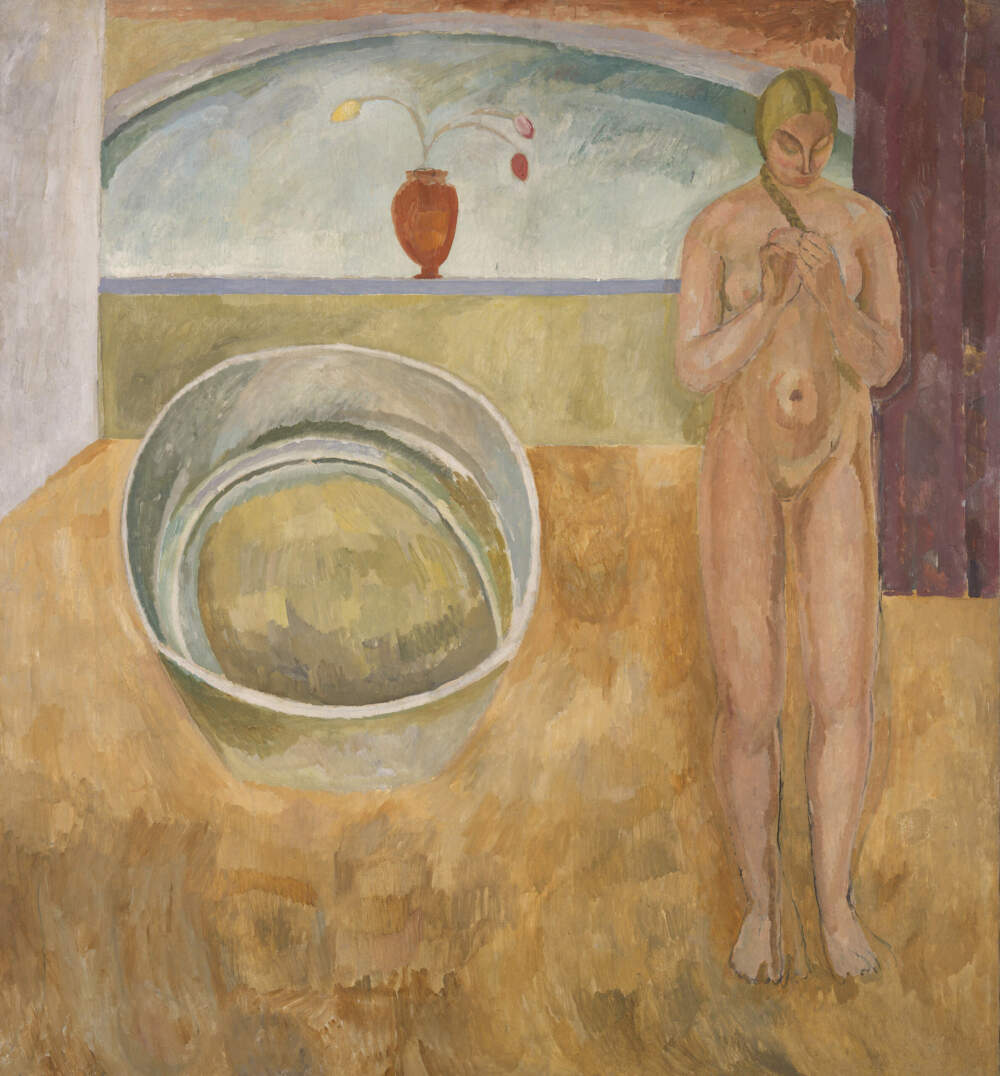Advertisement
'Twentieth-Century Nudes from Tate' on view in Worcester

Artistic movements and trends come and go, but some have staying power, like the fascination with the human form. The nude as a subject has been an enduring theme for millennia. The 28 works in “Twentieth-Century Nudes from Tate” on view at the Worcester Art Museum function as both a timeline and a study of how the long-established subject transformed.
“Where does the nude go in the 20th century?” asked Claire Whitner, the Worcester Art Museum’s curator of European art and director of curatorial affairs. “It becomes a way to experiment with form and talent, and then ultimately becomes a way to question ideas about identity, sexuality, race.”
The entrance to the exhibition, which is making its singular visit to the United States in Worcester, sets the tone with three notable works. On the left, Pablo Picasso’s 1932 “Nude Woman in a Red Armchair” is paired with Henri Matisse’s “Draped Nude” (1936), two male painters with significantly varied approaches. On the right, alongside the title display for the exhibition, a sharp critique of the role nudity plays in art with a screenprint of Guerilla Girls’ “Do Women Have To Be Naked To Get Into The Met. Museum?” (1989).
“This is now a very famous poster. My roommate from grad school had it hanging in her room,” Whitner said. “It really sets a tone for thinking about how you can engage traditional subjects in its own kind of discourse and criticality.”

What follows is a mostly chronological display of the shifting trends in nude art, split into four parts. In “The Private Nude,” the exhibition’s oldest works show women in the fashion of reclined odalisque subjects. Two oil paintings in the section include a 1906 Walter Richard Sickert, which presents a woman in bed, and a 1925 Pierre Bonnard depicting a woman lying in a bathtub.
The next section, “Abstracted and Surreal Nudes,” features the second work of Picasso in the exhibit as well as paintings that are nearly totally abstracted from the recognizable form: Grace Winifred Palithorpe’s “December 4th, 1938” and David Bomberg’s 1914 “The Mud Bath.”
Rounding out the show are the sections “The Realist Nude” and “Paint as Flesh,” which illustrate how not just the technical style of painting changed through the 20th century but also the dynamic between the painter, the subject and the context of the surrounding world.
“The Realist Nude” includes the depiction of nude males, as well as female subjects painted by women, including Alice Neel and her 1938 work “Ethel Ashton,” a subject Whitner notes was an artist in her own right. “Ethel Ashton was one of her colleagues,” she said, noting that Neel was using Ashton’s studio when she created the work. “To actually have women painting other women nude is a radical gesture at this point.”
Advertisement

Identity and the dynamic between the self and society plays a significant role in Bhupen Khakhar’s 1981 self-portrait “You Can’t Please All,” which he made at the time of his coming out.
“What he's showing are scenes from one of Aesop's fables about a father and son on a journey with a donkey and everyone that they encounter they try to please,” Whitner said of the painting. “In the end, they're able to please no one, because they can only ever half fulfill what they are achieving. And so there's this sort of real message of being true to yourself and identity that is bound up in this image.”
The latest works in the exhibition are two paintings by South African artist Marlene Dumas painted in the years following apartheid. A jubilant “Lead White” (1997) and somber “Ivory Black” (1997) are a complex contrast in color and expression.
“If you're an artist, lead white and ivory black are pigments that you can buy,” said Whitner, noting that the titles of the works point toward what Dumas viewed as inherent contradictions in notions of racial purity: a far idea from the 1906 depiction of a woman in a bathtub.
“Twentieth-Century Nudes from Tate” is on view through March 9 at the Worcester Art Museum.
